The Underground Environment

The Underground Environment

Life underground is drastically different
from that aboveground.
Most of these differences are shaped by
the unique limitations
and opportunities of the underground environment.
Several
blessings most surface dwellers take for
granted, such as sunlight
and fresh air,
are in short supply beneath the surface. On the
other hand, water
is usu. plentiful underground--even below
the driest of deserts, if one is willing
to go deep enough--and a
variety of rock && mineral treasures
await the miner who knows
where and how to look.
1. AIR SUPPLY
2. CAVE-INS
3. HYPOTHERMIA
4. MAGNETIC EFFECTS OF LODESTONE
5. NPC REACTIONS TO LONG UNDERGROUND ADVENTURES
Players make the decisions about their
characters’ likes and
dislikes. Henchmen and hirelings, however,
do not have the motivation
that inspires player characters to embark
upon a prolonged
underground expedition.
If NPC companions of the player characters
are expected to
accompany a long underground expedition,
special incentives
may be necessary to persuade the NPCs
to remain underground.
Henchmen and hireling loyalty should be
checked as soon as
they are informed of the nature of the
expedition, with a normal
Loyalty
Check as explained on DMG pages 36 and 37. The check
is required whenever a party plans to
spend a week or more
underground. It is not necessary for dwarf,
gnome, or drow
NPCs.
There are two additional modifiers that
may apply to Loyalty
Checks underground. A -5% applies to the
d100 roll for every
week that the party plans to spend underground.
Also, if the
NPCs learn that they have been deceived
about the duration or
destination of the expedition, or are
told when it is too late for
them to avoid it, an additional -10% modifier
applies.
For example, if the PCs lead a group of
henchmen and hirelings
across a blazing desert, then announce
that they will
explore a dungeon and plan to be underground
for a month, the
NPC Loyalty Check is made with a -20%
modifier for the month
underground and an additional -1 0% modifier
for deceiving the
NPCs.
Each NPC, whether henchman or hireling,
must be checked
with a separate roll. The DM should note
all of the NPCs who fail
the check.
Afailure on this Loyalty Check means that
the NPC does everything
possible, short of risking his life, to
avoid going on the mission.
If he is compelled to accompany the party
by circumstances
or the PCs, he is considered to be unsteady
An unsteady character becomes unsettled
by long periods
underground, away from sunlight and fresh
air. His mind begins
to slip, slowly at first, and finally
in a fashion that can prove disastrous
for himself and his companions.
The unsteady character begins to suffer
ill effects following the
first week underground. His morale is
lowered by 10% for all
Morale and Loyalty Checks. He acts nervous
and jumpy. Following
each additional week of underground exposure,
another Loyalty
Check is rolled for the character. As
soon as one of these
fails, he becomes completely irrational.
Roll ld100 and check the
NPC’s reaction on Table 20: Unsteady NPC
Reactions.
Table 20: UNSTEADY NPC REACTIONS
| d100 Roll | Reaction |
| 01-20 | Character runs screaming toward the surface to the limits of his Endurance |
| 21-55 | Character attacks nearby PC |
| 56-85 | Character attempts to sneak away quietly, as soon as possible |
| 86-00 | Charater freezes in place, not reacting or moving |
Effects determined on this table last until
the character is slain,
or returned to the surface. In the latter
case, the character must
spend ld6 weeks above ground before a
Wisdom Check is rolled
for him. If this check succeeds, the character
has recovered. If it
fails, the character is permanently afflicted
with the appropriate
irrational behavior.
| Features of the Underground Game | Nature of the Underground Environment and its Denizens | A Brief History of Underground Cultures | Underground Geography:
Domains in Three Dimensions |
Theories on the Nature of the Underdark |
| The Underground Environment | - | - | - | DSG |
AD&D@
game worlds offer a wide variety of underground passageways
of both natural and constructed origin.
Many of these
areas are inhabited by creatures that
resent intrusions into their
homes. This creates a vast underground
ecosystem that is far
more extensive than that of the real world.
While the existence of such an ecosystem
in a game does not
require any explanation beyond the fact
that it makes for a fun
campaign world, several logical reasons
justify the vast and wellpopulated
regions of the underearth.
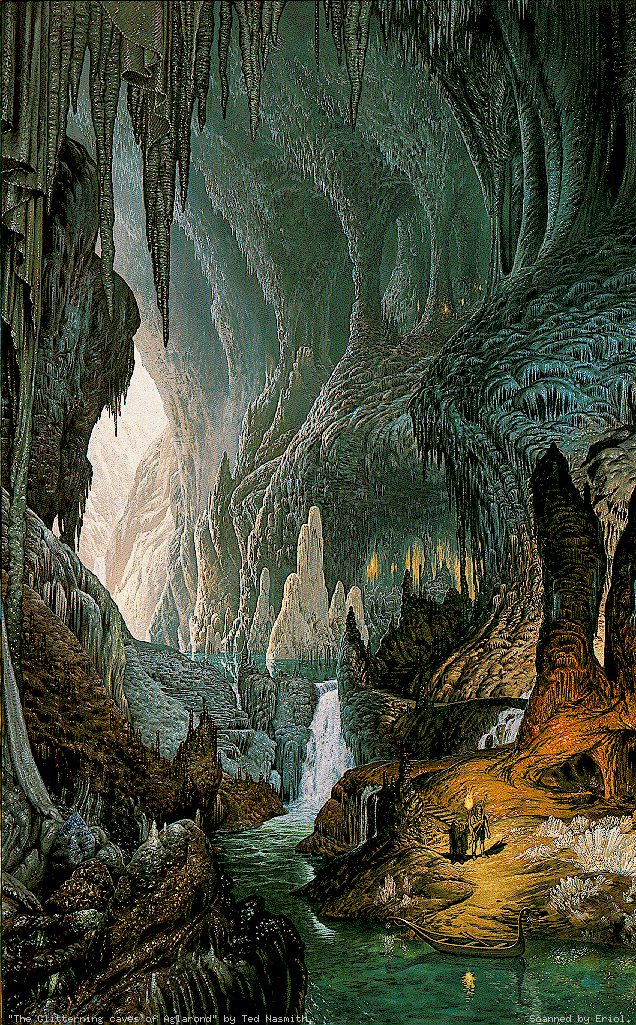
In a world where flying creatures are not
uncommon
and potent magical spells can magnify
the effects of a battery of
heavy cannon, underground fortifications
make sense. In some
ways, a dungeon
is a more secure position than a castle. Consider
the weakness of a historical castle to
aerial attacks or earthquake
spells, for example. A dungeon or underground
fortification is virtually impervious
to aerial attacks. Of course,
spells such as earthquake can cause damage
to underground
areas as well as to buildings on the surface,
but identifying the
target for the spell is difficult when
the dungeon lies well beneath
the ground.
A dungeon can also be held by a much smaller
group of
defenders than even a very well-designed
surface fortress, since
accesss to a dungeon is much more limited.
Although the attacks
of burrowing creatures such as umber hulks,
landsharks, and
xorn still present a menace, such creatures
are rarely marshalled
into an army. In any event, if a force
of such burrowers were collected,
it would present as much of a threat to
a castle as to a
dungeon.
The efforts of miners also threaten dungeons
and castles.
However, while a castle is likely to have
only a few dozen feet of
stone to block excavations, a dungeon
can be built at any depth.
The farther it is from the surface, the
more effort is required to
excavate an access for an attacking army.
Unlike castledefenders,
dungeon-dwellers do not have to maintain
a garrison
of troops to hold the wall, so they are
much more likely to have a
reserve of troops available to combat
a sudden break-in.
This defensibility probably accounts for
the survival of the
races of the drow and duergar. After suffering
nearly total defeat
at the hands of their enemies upon the
surface, the pitiful survivors
of these races slunk into the Underdark.
There they were
able to withstand the final assaults against
them, and managed
to survive and finally prosper. Although
these creatures are now
so fearful of sunlight that they pose
little threat to surface dwellers,
they are almost completely unassailable
in their underground
lairs. Thus, an uneasy balance is maintained.
Mining:
The proliferation of races such as dwarves
and
gnomes, whose economies rely almost entirely
upon their skill as
miners, accounts for a great deal of underground
excavation.
Indeed, many areas originally excavated
as mines have been
converted to underground fortresses, prisons,
or monster lairs. In
addition to these races, a number of monsters,
including purple
worms, umber hulks, and anhkhegs, burrow
throughout the
earth, creating passageways that can be
used by smaller creatures.
The combination of this great amount of
mining activity with the
burrowing of subterranean monsters has
created a network of
connecting passages that link nearly all
of the major subterra-
nean cavern networks. Thousands of huge
natural limestone
caverns-many of them over 100 miles long-are
now connected
by these tunnels.
Gravity:
Underground passages in the fantasy world are vast,
with many points of access
and egress on the surface. Often
these points are simply holes sinking
into the labyrinthine passages
below. Throughout the centuries, many
creatures fell into
these holes and were unable to get out
again. If food and the
other essentials of life were available,
some of them managed to
prosper underground. Gradually, the ways
of the sunlit world
were forgotten, and the creatures’ descendents
adapted themselves
more completely to the ways of the dark
world.
Features
of the Underground Game
| Control | Danger | Alienness | Frontiers | Back to Basics |
| The Underground Environment: DM's Section | - | - | - | DSG |
A RPG set in the narrow spaces of the
Underdark
occurs in an entirely different type of
environment from that of a
wilderness or city. In addition, the underground
game also contains
elements of story design, player character
decisionmaking,
and game limitations that are far different
from those in a
surface setting.
Control: In
an underground game, particularly
with lower level
PCs, the DM exerts a great deal of control
over the
options and challenges facing the players.
If the adventure
begins in a subterranean room with two
corridors leading from it,
the characters have only three real options:
stay put, or explore
one of the two corridors. Thus, the DM
needs only to prepare for a
few courses of PC action.
If you have designed an essential encounter,
you can easily
create a situation that leaves the PCs
no option but to tackle this
encounter. Even with several paths available,
you can place key
encounters in centrally located rooms
that PCs are almost certain
to visit regardless of the routes they
choose.
You can easily determine the tactics of
monsters and NPCs,
planning these encounters well in advance
because you know
that the party can only approach from
a limited number of directions.
You can rig alarms and set up ambushes
with confidence.
Of course, intelligent and creative play
can always undo many a
DM-rigged surprise!
Players may also have an easier time with
the underground
game, for many of the same reasons. The
very narrowness of
available options makes the decision-making
process easier-a
fact that is appreciated by beginning
players, in particular. Combat
tactics can be simplified by the confining
terrain of the typical
underground setting. PCs who find themselves
outnumbered
can hold a better defensive position in
a doorway or a IO-footwide-
corridor than they could in a wilderness
clearing.
Danger: Imaginary
danger is a key ingredient of all adventure
RPGs, and the dangers associated with
the underground
are some of the most fascinating and enjoyable
to play.
The darkness
of the underworld combines with the tight passageways
and distance from possible succor to create
an atmosphere
of intensity and excitement that is virtually
unheard-of in a
wooded or city setting.
The dangers of the underground touch fears
common to us all.
Caves and old mines are traditionally
regarded as dangerous
places where only experts dare tread.
The game allows players to
role play exploration of these forbidden
reaches with nothing at
risk save an imaginary character.
The depths of the earth have often been
associated with reallife
dangers such as volcanoes and earthquakes.
In addition,
there is a vast wealth of mythological
material about the foul
sources of evil lurking below the surface
of the world. When
game players enter these regions, they
have an opportunity to
role play confrontations with lurking
sources of evil in a foreign
and fantastic environment.
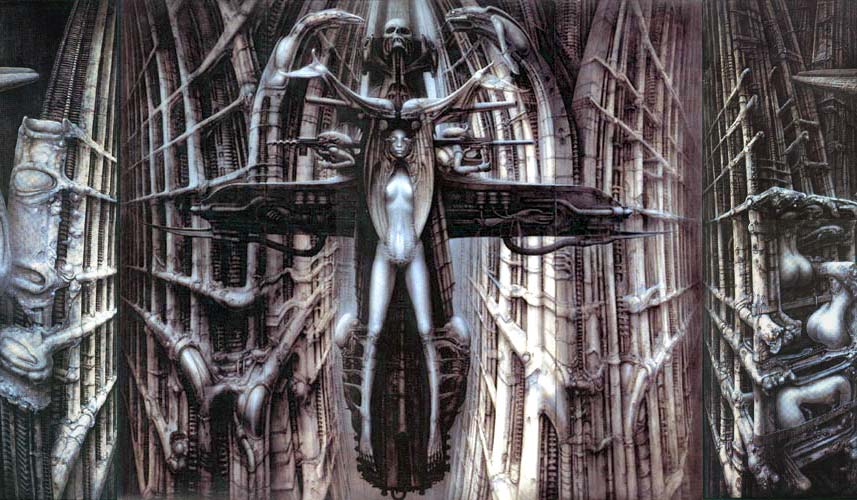
The players’ unfamiliarity with the underground
environment can add to the sense of wonder
created by adventuring
there. The combination of dark, mysterious
locations and
bizarre, unknown creatures give the AD&D@
game much of its
appeal. Nowhere are these features more
apparent than in the
underground.
The information included here enable the
DM to describe
underground regions in enough detail to
satisfy the players’ curiosity.
Although the underground should remain
unique and mysterious
to the players, the DM needs a great deal
of information in
order to effectively run the environment
as a believable and interesting
locale.
Frontiers:
The term frontier usually denotes a region where
the controlling influence of civilization
ceases and the realms of
wilderness
begin. It can also describe a boundary where the influence
of one government, society, or culture
ends and that of
another begins. Both of these meanings
apply to various regions
of the underworld.
The desire to conquer frontiers is almost
universal. In a world
where the reaches below the earth’s surface
present opportunities
for exploration and conquest, frontiers
are naturally
extended in that direction. In fact, characters
living in the center
of a large civilized area often find that
the frontier below their feet
is a great deal more accessible, and perhaps
more challenging,
than any of the farthest frontiers of
the national boundaries.
Expansion of the subterranean frontier
includes missions of
exploration, scouting, plunder, and conquest.
In each case, characters
push beyond the known limits of their
world into unexplored
(or at least, poorly explored) reaches.
Knowledge that they
carry back to the surface is valuable
information to their king or
other ruling body. In fact, the desire
to expand a frontier is often
sufficient motivation for a group of characters
to embark upon an
expedition.

As mentioned in the introduction, most
garners begin their careers with some
kind of underground exploration,
usually involving a dungeon
stocked with a few nasty monsters
and some worthwhile treasures. Many players
continue
with this type of game through increasingly
advanced levels,
while others soon tire of the routine
and either move on to a different
type of setting, such as city or wilderness
adventuring, or give
up gaming altogether.
Perhaps the most important point is that
underground adventure
does not need to be a routine of exploring
dungeons, slaying,
and looting. The realms of the Underdark
are populated with civilizations
as old or older than any on the surface.
These civilizations
are a rich source of challenge-their odd,
strongly
motivated NPCs can be used to create encounters
every bit as
sophisticated and challenging as role
playing in the court of the
High King.
Many players whose interests have moved
beyond the area of
underground adventures are not bored with
the underearth per
se, but with the type of adventures that
the DM created during
their early dungeoneering experiences.
In many cases, the DM
had little more experience with the game
than the players, and
nobody knew that there were other aspects
to the game besides
hacking and slashing one’s way through
a dungeon.
These players can often be drawn back into
the dungeon with a
more mature type of adventure, utilizing
a strong story line and
detailed NPCs to generate interest and
motivation among the
players. A DM familiar with the vast reaches
of the Underdark can
create underground adventures that challenge
any player. Of
course, many players enjoy the hack-and-slash
type of adventure,
and there is probably no better setting
for this than a dark,
dank, dungeon full of mysterious beasts
and devious traps. It is
important to realize, however, that if
the players are ready to
move on to a new type of gaming, it is
not necessary to leave the
dungeon for innovative adventures.
Player characters who have spent their
last few levels out of
doors or in a city often enjoy the change
associated with a return
to a dungeon adventures. Variety in all
aspects of the game is crucial
to maintaining both player and DM interest.
This variety can
be achieved by utilizing different settings,
as well as varying story
lines and conflicts.
Nature
of the Underground Environment and its Denizens
| Balance of Power | Alignment | Philosophy | Distance from the Surface | Ecology |
| The Underground Environment: DM's Section | - | - | - | DSG |
The following pages describe the individual
races && cultures
of the underground,
and introduce || enlarge existing descriptions
of unintelligent creatures that dwell
there as well. A few generalizations
that apply to all of the races living
beyond the Sun’s
reach are presented here.
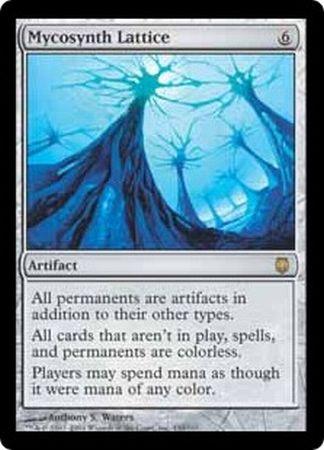
Each race of the underearth has unique
characteristics. The races of the drow,
duergar, svirfneblin, mind
flayers, myconids, kuo-toa, etc., have
existed together in
crowded underground chambers for centuries
in spite of their differences.
Whenever the DM allows PC intrusion into
these
realms, it is recommended that they find
these cultures in a precarious
balance of power. Because this balance
is unstable, the
arrival of a group of characters from
the surface may well be
enough to upset the equilibrium.
Like surface dwellers, the races of the
underground stake out
territorial claims, and generally attempt
to hold on to their collections
of caverns, tunnels, and underground islands
with all of
their means. Land is even more precious
to underworld folk than
it is to surface dwellers, since solid
rock often prevents a displaced
race from moving freely to another location.
Alignment:
Although all of the alignments and philosophies
known to intelligent creatures are found
among the deepdwellers,
a cursory examination of these races shows
a tendency
toward evil among the majority of them.
The reasons for this are
not entirely clear, although several lines
of conjecture have been
suggested.
It is known, for example, that the races
of the drow elves and
the kuo-toa
originally dwelt upon the surface of the world. These
races were driven underground as a direct
result of warfare
waged, and lost, against the united forces
of the current surface
dwellers. The actual details of these
conflicts have been lost to
time, but it seems a reasonable assumption
that the fundamental
conflict was a clash between good and
evil. Evil, losing, was banished
to the less appealing locations underground.
Of course, this oversimplifies the situation,
since there are evil
races and cultures remaining on the surface,
as well as bastions
of good existing underground. However,
the passage of time
since the ancient conflicts naturally
resulted in gradual changes
of the alignments and philosophies of
entire populations. Also,
evil governments may have worked out alliances
with the forces
of good, allowing them to coexist as allies
during those tumultuous
times.
Another theory attempting to explain the
proliferation of evil
creatures in the deep makes a connection
between these CUItures
and the denizens of the lower planes.
While it is certain that
the evil creatures of the Underdark worship
the potent forces of
evil ruling the lower planes, no concrete
evidence indicates that
the depth of the environment causes the
connection. It is quite
possible that the creatures of the Underdark
worship these evil
deities because of a previously existing
evil alignment.
The latter explanation might have the
most merit when applied
to the oldest of the underground races-those
with no known period
of surface-dwelling. Mind flayers and
derro fall into this category,
and it seems reasonable to assume that
these creatures
adopted their thoroughly evil alignments
long ago through the
dire influence of some dark power.
Philosophy:
Every underground culture has developed distinct
philosophies. Each culture has several
things in common
with other races living under the surface,
however.
A common feature of these peoples is an
absence of, and little
appreciation for, a sense of humor. Perhaps
because of the
sobering danger presented by the environment
itself-the tons of
rock poised overhead, the chance of asphyxiation
or floodthese
beings tend to see life as very serious
business. Their literature
and art almost universally portrays death
as an
omnipresent force. Laughter is almost
unheard of among the Cultures
of the deep reaches.
Many of these races are chaotic in nature,
but this alignment is
reflected mainly in large-group organization
and coordination.
The individuals of each race, whether
lawful or chaotic, tend to be
very disciplined in their personal habits
and social lives. No doubt
the scarcity of many resources taken for
granted on the surfacemost
notably air-has forced these creatures
to adopt a more
careful approach to life.
When art is created in the Underdark, it
usually has a function
beyond artistic merit. Sculpture is usually
worked into support
columns or sturdy arches, serving to decorate
those necessary
pieces of underground architecture. Solemn
vows or formal introductions
may be presented through songs, thus using
the
medium of music to help accomplish something
perceived as
useful. Encyclopedias are considered one
of the highest forms of
literature.
Waste, whether of food, material, or energy,
is deplored and
often punished severely. Again, the constraints
of the environment
can easily explain this value. Air is
a valuable resource, and
the control of its use, particularly regarding
fires, is a common
feature of underground law.
Underground races perceive the concept
of time differently
than surface dwellers. With no changing
of day into night or summer
into winter, a certain timelessness is
reflected in the philosophy
of the underground races. Often, the truest
indicator of time
is the aging of creatures and plants.
Even such long-term measures
of time have little meaning. A common
tale of the deep
races speaks of a young man from the surface
who was captured
and sentenced to immediate execution,
but died of old age in his
cell before the sentence was carried out.
Creatures raised in the underground are
usually very stubborn
and resistant to change. The most conservative
of the surface
governments would seem to fluctuate radically
and whimsically
by comparison. Perhaps this narrow-mindedness
arises also
from the environment-with solid rock all
around, the options
available when a decision is required
are often seriously limited.
Distance from
the Surface: The subterranean reaches
extend from the entrances to caverns,
tunnels, mines, and ventilation
shafts on the surface to the deepest hollowed-out
regions
of the Underdark.
The exact depth of the lowest areas is
unknown, but can be measured in tens of
miles. The characteristics
of a given area are determined to a great
extent by how far
below the surface it lies.
Resources acquired from the surface
are common only in the
top several hundred feet of the Underdark,
except in those areas
where gravity can be used to move resources
deeper without too
much difficulty. Wood is probably the
most common of the
surface-based resources to be transported
underground, since it
is needed to shore up tunnels or bridges.
Occasionally wood can
be transported to great depths with the
aid of an underground
stream or river of significant depth.
The timber is harvested on
the surface and then simply thrown into
the water, where it flows
downstream to the desired location. There
it is retrieved and
transported to its final destination.
Although wood can be carried
a mile or more below the surface this
way, few waterways have
sufficient flow to carry the wood without
jamming, so this tactic is
only employed in certain areas.
Certain rare species of fungi with solid,
woody stems also grow
underground. When they can be located,
these are often harvested
for use as wood.
Food and slaves are additional resources
occasionally harvested
by the denizens of the Underdark. Slaves
and food that is
taken on the hoof are generally forced
to move under their own
power into the depths of the earth. Most
creatures living underground
do not grow crops or maintain herds, preferring
instead to
raid food stores collected by the surface
dwellers.
Another characteristic at least partially
influenced by distance
from the surface is the degree of similarity
to humans possessed
by creatures of the Underdark. This does
not apply to individual
creatures encountered in dungeons so much
as to the cities and
cultural centers of more advanced civilizations.
While the homelands
of the drow, duergar, and svirfneblin
are very deep beneath
the surface, the domains of the much more
alien mind flayers and
aboleths are even deeper.
Ecology: The
ecology of the underground environment has
developed very differently from that of
the surface world. The
foundation of life on the surface is sunlight,
which the underworld
completely lacks. A second element surface
dwellers take for
granted is air
supply, which is much more vulnerable underground.
Consequently, underground life has adapted
to the lack
of sunlight, and does not rely on an unlimited
supply of air.
The underground food chain begins with
many types of fungi,
lichens, and molds that grow without benefit
of sunlight. Herbivorous
creatures such as rothe and cave pigs
have adapted to life
underground by subsisting on these plants.
Intelligent creatures
have domesticated these herbivores, thus
insuring a supply of
fresh meat. As on the surface, unintelligent
creatures generally
eat what they can catch.
Certain unusual life forms have developed
underground and
manage to subsist on diets of stone, gems,
or minerals. These life
forms are quite alien to most creatures,
and generally do not
occupy a place in the food chain. Creatures
that subsist on such
fare are believed to be inedible to carnivorous
or omnivorous
hunters. Another common underground creature
is the scavenger,
which lives off carrion, garbage, and
offal. These creatures
occupy a very minor place in the food
chain, since few carnivores
find them palatable.
Subterranean life forms have evolved an
ecology that does not
depend on sunlight. Creatures living closer
to the surface, however,
often benefit from the comparatively plentiful
surface food
by collecting plants and animals in nocturnal
raids to supplement
their supplies. Most creatures that live
close enough to emerge
from their lairs and return to them in
a single night prefer this
means of subsistence.
Oxygen is a matter of primary concern,
for it must be circulated
even to the deepest reaches of the Underdark,
or the inhabitants
of the deep will suffer. Common rumors
speak of huge shafts that
plummet many miles straight down in arctic
regions until they
reach an area inhabited by an underground
culture. Cold air naturally
tends to sink into these shafts. Underground
races use
geothermal heat to warm the air and send
it rising through different
areas of their domain. Eventually it emerges
through
dungeon and cavern entrances. This is
a natural process; no
forced air movement is necessary. However,
localized pockets of
stagnant air may occur in this system
unless steps are taken to
improve circulation.
68
A Brief History of Underground Cultures
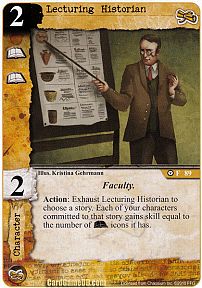
Creatures have dwelt in the realms below
for nearly as long as
they have walked the regions of sunlight.
Although the exact
details of underground life are a matter
of individual campaign design,
a rough overview of the major underground
populations is given here.
Certain intelligent creatures of the underearth
have no memory,
nor any recorded history, of existence
outside of their sunless
domains. It seems logical to assume that
these races have lived
underground for as long as they have existed
in their present
forms.
Five distinct cultures have been identified
as dating back to
ancient times in the underground. Two
of these--the jermalaine and
the myconids--have spread through virtually
all of the underground
realms, living in groups that vary from
small and isolated
communities to vast cities.
The jermalaine
were responsible for
creating most of the small, narrow tunnels
that originally connected
many widely separated caverns. Although
the tunnels
excavated by jermalaine were too small
to allow passage to most
other creatures, they served as initial
routes which were later
expanded and organized by other underground
dwellers.
The race of fungus-men,
or myconids, has branches in most of
the deeper areas of the underground. Basically
peaceful, the
early myconids were nonetheless capable
of defending themselves
against the depredations of the jermalaine,
and the two
races learned to coexist with little friction.
Since their food
sources differ, the two races were not
forced to fight for the same
ecological niche.
Three other races seem to have existed
forever under the
ground, but their numbers are much more
localized and concentrated.
The aboleth,
evil creatures of extremely high Intelligence
and advanced culture, live in the deepest
regions of the underearth.
Although capable of functioning in an
airy environment,
aboleth much prefer the dark reaches of
subterranean waterways
for their domains. The aboleth population
is concentrated in
sprawling cities located on the floor
of the Darksea-the vast
underground ocean that is the final resting
place of underground
water.
Because most of the other intelligent
races inhabiting the
Underdark are incapable of living underwater,
the aboleth have
developed their cities and culture with
little interference from
other races. Aboleth are ineffective outside
of water, however;
they are unable to extend their influence
throughout the rest of
the dark domains.
The cloakers
are another culture that has dwelt underground
since time immemorial. So alien that few
other creatures can
communicate with or understand them, the
cloakers live in small
pockets of caverns and tunnels. They often
seem to move into
areas that have been excavated or constructed
by other creatures,
driving the original inhabitants away
with deadly persistence.
Mind flayers
(illithids) are the fifth of the original known underground
cultures. It is thought that the mind
flayers at one time
controlled vast reaches of the underground
domains, and were
feared throughout the lands of darkness.
Their extremely high
Intelligence and fearsome combat ability
allowed the illithids to
move wherever they pleased and take whatever
they wanted, for
none of the other original underground
races could stand up to
them. Only the very low reproductive rate
of the mind flayers prevented
them from gaining control over the entire
Underdark
world.
The illithids have been the victims of
numerous race wars initiated
by other underground dwellers who fear
their great powers.
These wars have driven the mind flayers
into deep and hidden
69
realms, where they are virtually unassailable.
Although warfare
was not unheard of among the cultures,
these five races lived for
millenia in relative balance in the deep
reaches under the earth.
The jermalaine and myconid dwellings were
widespread, while
the aboleth, cloaker, and mindflayer cultures
were much more
localized.
The Alignment
Wars: Then came the great Alignment
Wars. These were actually all a
part of a single grand conflict that spanned
centuries, with occasional
truces that lasted a few decades. The
Alignment Wars
were characterized by great interracial
cooperation and intraracial
combat. The sides were determined not
by race, but by alignment.
Thus, elves,
dwarves, and men of good alignment united to
fight elves, dwarves, and men of evil
alignment. The wars
extended to the seas, where the flourishing
race of kuo-toa chose
to align with the forces of evil and fight
against the marine creatures
of good.
All of these evil creatures bore an intense
dislike for the sun,
and thus their expansion halted at the
mouths of their tunnels and
caves. Rarely would an individual from
one of these races venture
onto the surface, even in the dark of
a moon less night.
Rarely, also, would any surface-dweller
dare the inky blackness
of the world below.
Over the centuries, the forces of good
slowly drove back their
evil foes. Hatred and slaughter prevailed
as creatures of evil were
slain solely on the basis of their alignment.
Great battles were
fought, and eventually the remnants of
the forces of evil had to
acknowledge complete defeat. Bitterly,
these survivors sought
shelter underground and prepared for a
final battle. The drow
elves and gray dwarves (or duergar) moved
underground in great
numbers. The skills they had developed
through centuries of
warfare allowed them to overcome the prior
tenants of the underground.
Likewise, the kuo-toa moved under the
surfaces of the seas
and into subterranean waterways to escape
the genocide of the
Alignment Wars. Tired of the unceasing
conflict, the victors abandoned
their pursuit of the vanquished. Soon
the grand alliance
faded, and once again new sources of evil
appeared on the surface.
Today, little evidence remains that the
forces of good once
held sway over the entire surface world.
Below, warfare again raged, but the newly
arriving races were
able to carve out niches for themselves
in the Underdark. The
domains of the mind flayers and cloakers
were severely reduced
as drow and duergar forces seized caverns
and tunnels. The kuotoa
branched out and claimed many small, dispersed
areas for
themselves. Jermalaine and myconids continued
to prosper,
although they were crowded somewhat by
the immigrants. Only
the aboleths, serenely evil and complacent
in their deep retreats,
were left undisturbed by this transition.
As tunnels and caverns were expanded through
the efforts of
these cultures, many cubic miles of rock
were moved. This excavation,
coupled with the efforts of powerful spell-casters,
opened
gateways from the underworld to several
other planes. The connection
to the Plane of Earth was (and continues
to be) the
strongest one, and many denizens of the
underworld can call
upon creatures from that plane at will.
Additionally, connections
to the lower planes and their insidious
evil developed. Where volcanic
rock bubbled or underground waterways
flowed, doors
were opened to the Planes of Fire and
Water, respectively.
Although creatures from these planes only
represent a small
minority of the population of the underworld,
the interplanar doorways
are not uncommon. Often, adventurers can
discern the
proximity of a gate to another plane by
an unusually high population
of that plane’s denizens.
Two other cultures intruded upon the realms
of the Underdark
during the following centuries.
A race of gnomes was so motivated
by their lust for gems that they adapted
completely to life
underground. These deep
gnomes, or svirfneblin, are one of the
few underground cultures with tendencies
toward good alignment.
And finally, the pech arrived, apparently
emigrating to the
deep reaches from another plane-perhaps
the Plane of Earth.
Like the gnomes, they were drawn by a
desire for mineral wealth,
and soon developed an unsurpassed skill
at working stone. In
many cases, these skilled miners were
able to excavate their living
quarters from the bedrock itself.
The most recent arrival among the ranks
of the underground
cultures are the derro.
These small, dwarf-like wretches seem to
have grown from interbreeding between
duergar and other unidentified
but vaguely human races.
As is only natural in an area with little
space, food, and air, savage
warfare commonly erupts between the races
crowding the
realms beneath the ground. These wars
have been waged since
the drow and duergar first began their
retreat beneath the surface,
and they continue with the same savagery
today. As a direct
result of these wars, areas that were
once overpopulated are now
desolate wilderness, and the underground
populations have
been whittled away to small, isolated
communities.
Today small, civilized pockets of the drow,
duergar, myconids,
derro, pech, cloakers, mind flayers, and
jermalaine are spread
throughout the vast reaches of the underworld.
Between these
pockets, large stretches of uninhabited
or monster-inhabited tunnels
and caverns create a complicated maze.
Below, in the still
waters of the Darksea, the aboleth retain
their age-old control.
UNDERGROUND GEOGRAPHY:
DOMAINS IN THREE DIMENSIONS
| Surface Terrain | Temperature | Humidity | Size | Origin |
| - | - | Access and Egress | - | - |
| The Underground Environment: DM's Section | - | - | - | DSG |
Although most of the underearth is filled
with solid rock, dirt, or
lava, the total AREA of all the caverns,
dungeons,
and tunnels
equal the ground area of a large nation.
These accessible areas
are the underground world that awaits
the players. It is important
that the layout and geography of this
world are well conceived
and thoroughly understood by the DM.
There is reason to believe that the regions
of habitable underground
terrain extend underneath much of the
campaign world. It
would certainly be impractical to try
to map out an entire world’s
worth of caverns and dungeons, however!
The DM should handle
the creation of an entire underground
world on a campaign-bycampaign
basis.
This section details a typical area of
underground geography
that a DM might find suitable to place
underneath his aboveground
campaign world. The area described is
about 1,000 miles
in diameter and several dozen miles in
depth. The basic patterns
of domains and their interrelationships
can easily be adapted to
fit a DM’s needs.
This AREA includes individual holdings
of all of the common
underground cultures, as well as all of
the common underground
terrain types.
The factors governing the types of underground
areas in a
region are not as complex as they are
on the surface, and thus
the development of such regions is easier
for the DM to plan and
control. Several elements do come into
play, however, and they
are discussed individually:
Surface Terrain
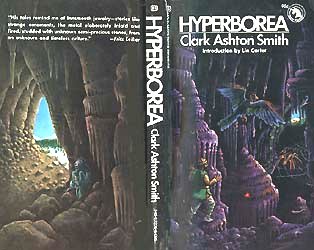
The land or water above an
underground region influences the
geography found below. A
network of tunnels or caverns located
beneath a body of water
is nearly always water-filled. If not, a
rationale must be developed
to explain the presence of air. Powerful
magic can hold the water
at bay, but such enchantments
must be permanent. Air pockets
may be trapped in dead-end cor-
ridors, but such air cannot
circulate and hence is stale and of limited
use for air-breathing creatures.
Even
underground areas located below dry land may be filled
with water. If the region
receives a lot of rainfall or is extremely
flat, water usually soaks
into the ground rather than flowing away.
All areas contain a water
table-a level below which all openings
are filled with water. Unless
underground waterways provide
steady drainage, the water
table can make entire stretches of
caverns and tunnels uninhabitable.
When
an underground domain occurs beneath mountains, it
may contain a series of
dungeons or caverns that are actually
higher in altitude than
many surrounding lands. Explorers in such
may move deeper and deeper
into the earth, possibly riding
along the current of a river,
and abruptly return to the surface at
the base of the mountain
range.
Mountains
and other areas of solid granite are much less likely
to be penetrated by caves
than are the vast expanses of limestone
bedrock that lie beneath
much of the plains and forests of
the surface. These areas,
which were once seabeds, are the
most susceptible to natural
cave formations. Of course, underground
areas that have been excavated
can be discovered anywhere,
regardless of rock type.

The nature of a particular
underground region is often determined
by the prevalence of nearby
heat sources. When geothermal
energy is present, caverns
tend to be more crowded with
subterranean plants than
cooler regions are.
Creatures of intelligent
underground races, particularly the
drow
and the duergar, seek out these warmer caverns for their
lairs and cities. Thus the
chance of encountering intelligent denizens
is significantly higher
around sources of underground heat.
Warm temperatures also serve
to circulate air, since heated air
tends to rise toward the
surface and cool, fresh air is drawn in to
replace it. Although this
natural convection is slow and somewhat
inefficient, intelligent
races often excavate ventilation tunnels to
exploit it. Areas thus modified
tend to have a good supply of fresh
air.
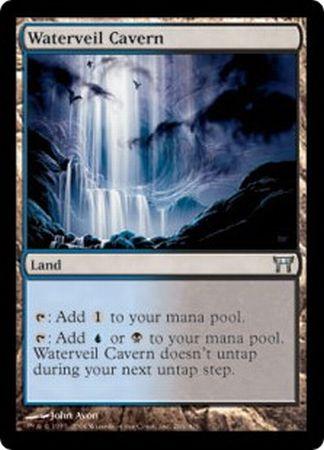
The amount of moisture in
a cavern affects the stone of the
walls, as well as the habitability
of the area. If a cave dries up, its
stalactites, stalagmites,
and all exposed surfaces grow extremely
brittle and eventually turn
to dust.
The combination of high humidity
and warm temperatures creates
a steamy environment highly
prized by certain scavengers.
The rock in such areas tends
to be very slippery, and is often
coated with lichen, mold,
or other slimy matter. Underground
areas of extremely low humidity,
regardless of temperature, tend
to be very dusty.
Water
flowing through an AREA constantly erodes its bed, so the
area itself is always changing.
Such erosion often leads to caveins
and rock slides, hazards
not common in drier regions.
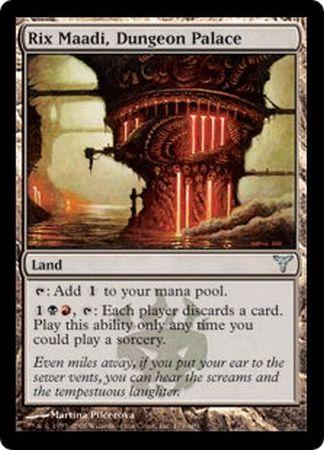
The expanse of an area hollowed
out from rock determines a
great many of its characteristics.
Most obvious are the physical
limitations placed upon
the sizes of creatures that could be
encountered there. A group
of halfling explorers does not worry
about encountering ogres
in a network of three-foot-wide tunnels!
The relationship between
an area’s size and its potential for
cave-ins is also significant.
Some of the largest underground
caverns have ceilings that
soar hundreds of feet above the floor
and stretch as much as a
mile from side to side. Unless a cavern
of this size is magically
or physically supported, intelligent creatures
tend to avoid it when seeking
living quarters. Even a minor
earthquake, tremor, or landslide
could create a catastrophe of
colossal proportions by
caving in a section of the ceiling.
The races of the drow, duergar,
and derro do prefer large
underground areas for their
communities, but are careful to prevent
such disasters. Support
columns are the most common precaution,
but various permanenced
magical spells also serve to
prevent cave-ins.
Creatures such as the jermalaine
and pech choose small, constricted
tunnel networks as living
quarters. The small size of
these creatures is their
greatest defense in such locations. Other
underground creatures are
adaptable to many different types of
lairs, and can be encountered
in both small and large areas.
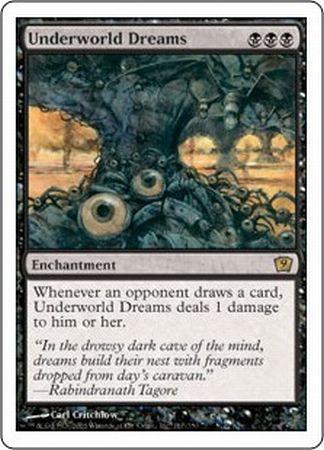
An important facet of underground
geography is the origin of
the spaces between rocks.
Caverns,
lava caves, and other naturally
eroded or developed places
vary widely size and shape.
Such locations are earmarked
by irregular walls, ceilings, and
floors. In fact, these surfaces
may be so rough, steep, or constricted
that travel on foot is virtually
impossible.
Areas that have been constructed
by intelligent races, on the
other hand, show evidence
of the builders’ craftsmanship. The
lairs of the duergar and
svirfneblin are the most smoothly carved
regions of the underworld.
Often, a large central cavern is developed
into a virtual domed city,
with individual residences excavated
into the walls of the cavern.
These skilled miners are
capable of digging a perfectly
straight tunnel many miles long, or
of creating ornate stonework
decorations.
Other races, such as the
drow and kuo-toa, have a limited ability
to excavate stone, but do
so if necessary. These creatures
much prefer to discover
a fine duergar lair, overcome the gray
dwarves’ defenses, and claim
it for their own. Races such as the
mind flayers and myconids
show no interest or ability in excavation,
and live in natural caverns
or abandoned dungeons.
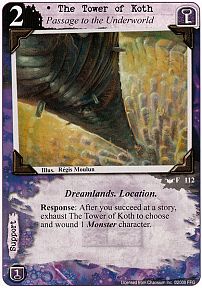
The difficulty with which
creatures can journey from an underground
region to the surface tells
a great deal about the dark
region’s characteristics.
Fresh
air is much more plentiful in those
areas with some direct connection
to the surface. Of course, air
can flow through shafts
and tunnels that do not allow creatures
easy access (the miles-deep
shafts of the arctic ventilation
tunnels
present a good example of
this).
In general, areas that allow
easy access to the surface world
are populated by creatures
that occasionally leave the underworld
to raid or trade with surface
residents. Orcs, goblins, and
kobolds are good examples
of these races. Most of the cultures
of the Underdark, however,
prefer to dwell so deeply that they do
not have to worry about
the outside world. As these creatures do
not like to venture onto
the surface, likewise they do not welcome
intrusion from creatures
living above.
THEORIES
ON THE NATURE OF THE UNDERDARK
| The Hollow Earth Theory | The Swiss Cheese Theory | The Isolated Pockets Theory | The Partial Connection Theory | The Underground Environment: DM's Section |
Because only a few courageous explorers
have ventured into
the realms
of the underworld, and even fewer have returned
to
tell their tale, there are many unanswered
questions about the
exact nature of the world beneath the
earth.
Each of the following theories has been
proposed by adventurers
or sages
who have studied the history and nature of the dark
regions, and each theory has its own merits.
They are presented
for the DM’s use, and can provide insight
into world design. As to
which (if any) of them are correct, the
DM must decide which is
most consistent with his overall plans
for his campaign world.
These theories may not be common knowledge
among the citizens
of your campaign world, although you may
allow this if you
wish. It is more likely that each theory-
is regarded much as an
advanced scientific hypothesis is today-that
is, the information
is not regarded as secret by the sages,
but it is not of broad
enough interest to become a popular topic
of conversation
among the populace. If player characters
wish to find out about
some of these theories, they should seek
out knowledgeable
NPCs, and perform whatever role-playing
tasks are necessary to
gain the information.
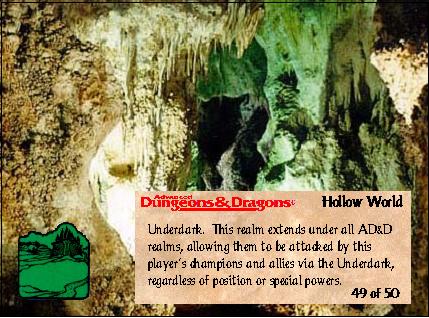
This hypothesis holds that the earth’s
surface is a mere crust
over a vast open space, and that a wide
variety of life forms pursue
their existence almost completely isolated
from the surface
world. No adventurer is known to have
visited this inner earth,
and all reports of it originate from the
deepest of the underground
cultures.
Descriptions of the exact nature of the
hollow earth vary. Some
stories maintain that a vast atmosphere
exists beneath the crust
of the outer earth, and that a small version
of our own world rests
in the middle of this atmosphere. Obviously,
only creatures that
can fly || levitate
for long periods of time could possibly travel
from one world to the other. The inner
earth is presumably
cloaked in utter darkness, although rumors
tell of savage bouts of
volcanic activity that often light up
great tracts of it.
Other versions of this theory hold that
columns of fiery lava fall
from the outer earth and create a rain
of fire onto the inner earth’s
surface. The temperature there is reportedly
very high, and the
world hosts only those creatures that
have developed a considerable
liking for, or resistance to, fire.
Another hollow earth theory holds that
the entire center of the
earth is hollow, and that the outer earth
forms a thin shell around
this emptiness. Creatures reportedly live
on the inside of the shell
and look up to the center of the earth.
This theory is considered
one of the more far-fetched explanations
of life underground. A
variation of this explanation embraces
the same overall structure,
with an air-filled center, but denies
that creatures can walk
upside down on the inner surface of the
shell. Instead, the center
of the earth is home only to flying and
levitating creatures, and is
in fact a prime point of connection between
the Plane of Air and
our plane.
According to this theory, the world is
fundamentally solid with
no massive hollow space at its core, but
enough caves, caverns,
and artificial passageways exist to allow
an individual to travel
anywhere under the world.
The argument most commonly used in support
of this theory is
the widespread occurrence of many of the
common underground
races, such as goblins,
hobgoblins, and orcs. These creatures
can be encountered in most lands on the
surface. Since none of
them like to live (or presumably travel)
overland, it is argued that
their wanderings must have occurred through
a vast network of
tunnels underneath the surface.
The exact nature and origin of these tunnels
is left to speculation
by the proponents of this theory. It is
known that many characteristics
of goblins inhabiting the dungeons of
one land are
mirrored by goblins inhabiting the dungeons
of a land thousands
of miles away. This alone does not prove
the theory, since it can
be argued that the goblins might have
migrated overland, or that
their common traits were delivered to
both races by the same
source-an evil deity, for example.
Many adventurers have embarked upon missions
to prove this
theory true. Most of them have failed
to return, but those who
have emerged again report only failure.
All of the expeditions that
survived began by following a promising
route, only to find that it
dead-ended, circled back upon itself,
or led to the surface near
the starting point.
If there are indeed connections between
most of the realms of
the Underdark, this fact has not been
exploited by its denizens. It
could be that the passages are too small
to be used by great numbers
of individuals, that the distances between
the habitable
regions are too great, or simply that
strife among the denizens
has prevented large-scale movements from
one area to another.
This explanation is the least imaginative
of the theories, but fits
most closely with present observations
of the underground
regions. Although areas of vast realms
and highly developed cultures
have been discovered beneath the surface
of many lands,
the Isolated Pockets theory claims that
each of these underground
regions is an area unto itself, with no
subterranean connections
to any other underground regions.
The small bits of contrary evidence, such
as cultural similarities
between widely separated underground populations,
are
explained as either the results of migration
over the surface, or as
the influence of some deity not bounded
by the constraints of
geography. The overland migration of creatures
that hate sunlight
could have been forced. For example, a
migrating group of
humans may have taken goblins as slaves
and forced them to live
above ground for many generations. Perhaps
some of these goblins
escaped and sought refuge in underground
dungeons and
caverns. These goblins would have many
of the same cultural
traditions as their ancestors.
This theory is common among the most knowledgeable
students
of the underworld, but whether for any
intrinsic merit or
simply because it presents the best compromise
is open to speculation.
The theory maintains that there are indeed
connections
between all or most of the underground
regions, but stops short
of the Swiss Cheese theory’s
easy accessibility. The Partial Connection
theory holds that the connections between
widely separated
regions of the underworld are treach’erous
and often
impassable routes.
Fire, in the forms of volcanic activity,
lava, steam, etc., is commonly
suggested as a block to these passages.
Only creatures
with powerful resistance to fire could
be expected to traverse
these barriers. Water is the other commonly
mentioned obstacle
that makes travel through connecting passages
difficult or
impossible. Regions of the underground
that lie beneath the
deepest seas and oceans are unlikely to
be filled with breatheable
air, thus closing off many passageways.
The Partial Connection theory allows for
limited traverse
among the separate regions of the underground,
but only by
creatures capable of dealing with the
fierce obstacles lying in
their path. Alternatively, creatures could
have made a migratory
underground journey through a traversable
region in the distant
past, and that region could later have
been filled with water or
split by the fiery activities of volcanic
rock.